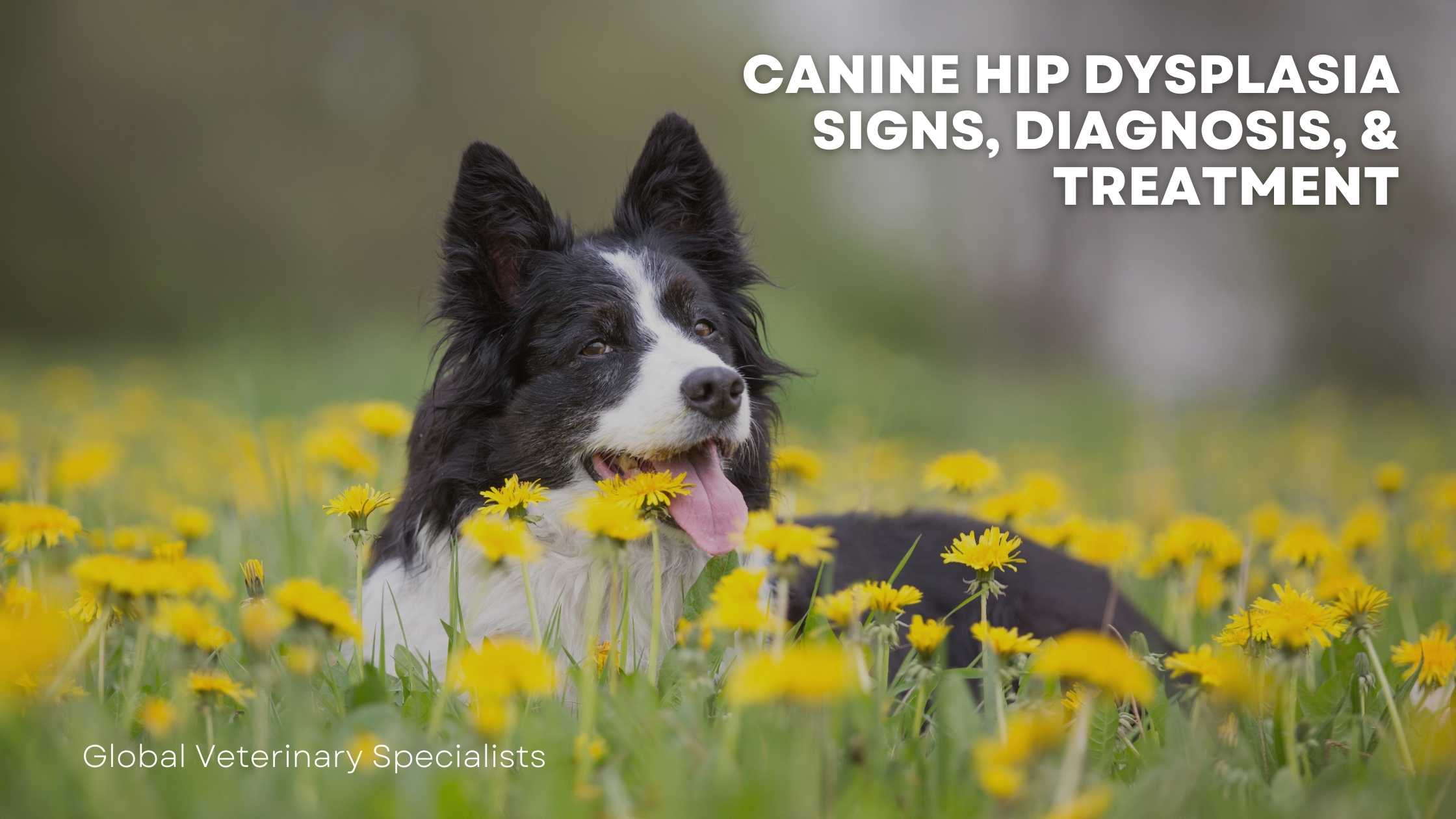With the arrival of spring, you may be taking more adventures with your dog, which also highlights the importance of looking for signs of canine hip dysplasia. This condition is characterized by an abnormal laxity of the hip joint in which the ball and socket do not fit properly, causing them to rub together. That results in a painful joint for your pet and, depending on the severity, can affect their quality of life. The first step toward restoring a pain-free joint is to consult a veterinary specialist.
Know the Signs
Dogs with hip dysplasia often begin showing symptoms by one year – some as early as six months – although they may be subtle at the onset. While there may not be any noticeable limp or holding of the leg up off the ground, at least at first, common symptoms include:
- Weight shifting
- Bunny hop gait
- Premature tiring during exercise
- Mild limp when rising after rest
- Hesitance to jump or climb stairs
- Noticeably uninterested in exercising or playing
- Content to observe rather than participate in vigorous playtime
- Slightly arched back because of weight shifting to the front legs while standing
Diagnosing Canine Hip Dysplasia
A veterinary specialist will perform a comprehensive physical examination after your dog’s medical history has been obtained. First, the specialist will observe your pet’s posture and ambulation, then manipulate all four limbs to test the looseness of the joint and check the range of motion, with the hip joint often examined last.
However, radiographs are needed to confirm the diagnosis of canine hip dysplasia. The specialist will obtain two views, a ventral-dorsal and lateral radiograph of the pelvis.
Whether mild, moderate, or severe, the severity of the laxity and arthritis must be decided. Combining clinical and radiographic findings is essential when making treatment recommendations best for the animal’s quality of life.
Depending on the condition’s degree, several treatment options ranging from lifestyle modifications to surgical intervention may be considered. For example, dogs with moderate to severe HD are often best treated by undergoing a total hip replacement (THR).
A THR procedure involves surgically replacing the affected joint with titanium or cobalt-chrome stainless steel and ultra-high molecular weight polyethylene implants divided into cemented versus cementless prostheses. This procedure has been highly successful for dogs and cats at reestablishing normal function and a pain-free joint.
Schedule an Appointment with a Veterinary Specialist
Global Veterinary Specialists is staffed by an exceptional team of highly qualified board-certified veterinary surgeons with experience performing total hip replacement (THR) procedures. All the surgeons are dedicated to using their expertise to improve patient care and expand the knowledge of veterinary joint replacement surgery worldwide. Create a life without limitations for your pet by contacting us today to learn more about the available treatment options.



